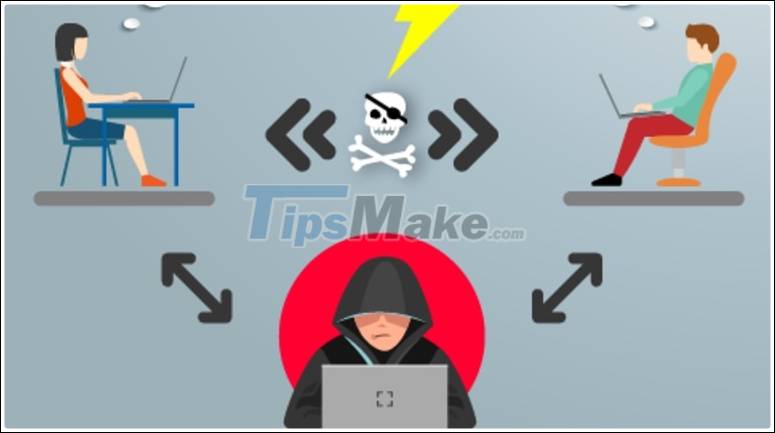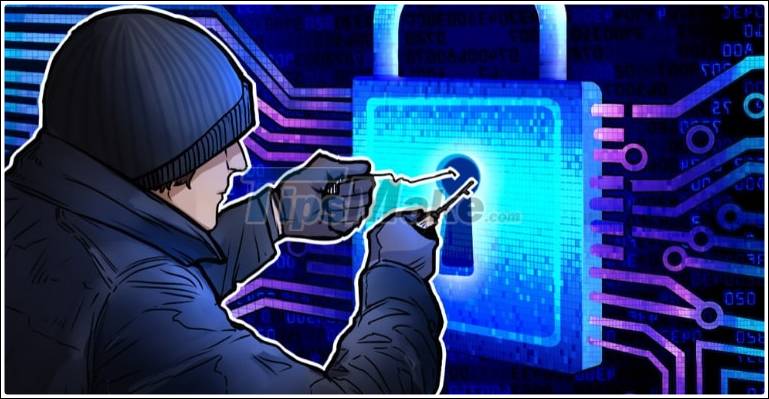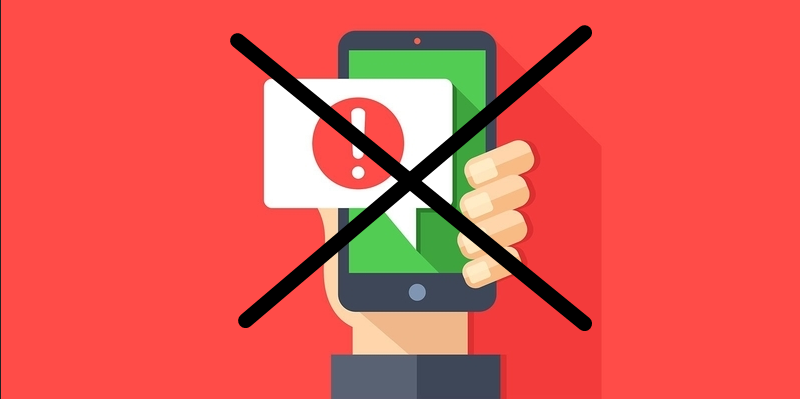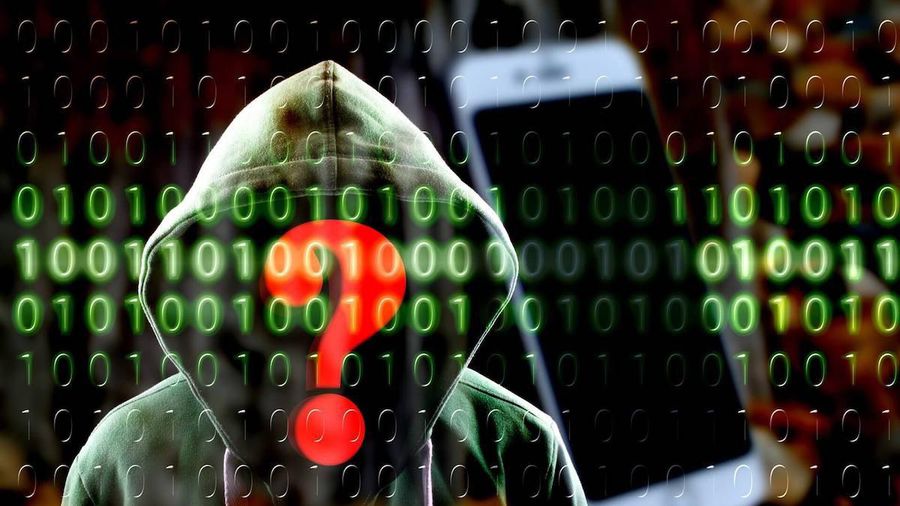What type of password attack is a Passive Online attack?
The advent of the Internet brought many big changes to people's lives, in addition to convenience, which are negative aspects that not everyone understands. One of the biggest risks is password hacking on the internet. The following article will give you a more comprehensive look at different types of password attacks, especially Passive Online. Let's find out through offline.
1. What is Passive Online Attack?
Passive Online attack is a form of password attack , attacker (hacker) will "sniff" (sniffing) to find vulnerabilities, traces passwords in the same network.
Before posting, the user's password will be verified in several stages. First, the password is "captured" (captured) to compare with a word list or dictionary. The password is then encrypted or "hashed" aimed at preventing unauthorized access and authenticating the origin (the owner).
The attackers will use a number of special tools to decrypt the algorithm and gain access to the password.

Common Forms for Passive Online attacks
- Traffic analysis
Observe the website movement and user visitor activity for each website.
- Exploit
Check email, messages have been decoded.
- To scan
Check the extension (open ports, low security framework) associated with the web for security holes.
- Encode
Block scrambled data streams and decrypt the encryption algorithm.

2. Passive Online Example
In the Man In The Middle (MITM - another Passive Online attack) the hacker intercepts the password authentication request and sends it to their own server.
Soon after, the hacker embeds a spy assessing the connection between the user and the server. In this way, the hacker can detect the two links, capture the user's secret key and password on the way to the confirmation server.
The attacker also sends back authentication packets to impersonate the user to authenticate the password without having to crack the secret key.

3. The difference between Active Online and Passive Online attack
- Active Online
The attacker will try to modify the content of the message.
Endanger the usability (availability of documents or messages).
+ Victims (users) need to pay attention when detecting the intrusion.
+ The victim is notified of the attack.

- Passive Online
The attacker will observe the messages and copy them for malicious use.
+ Threats to confidentiality.
+ User should pay attention to avoid (using high-strength passwords with two-factor authentication).
+ The victim was not informed.

The article covers relevant information about Passive Online password attacks and the difference between Passive Online attacks versus Active Online attacks. Thank you for watching and see you in the following articles.
You should read it
- What is a Sybil Attack?
- What is Office 365 Attack Simulator? How to use it?
- What is a Replay Attack?
- What is Volumetric DDoS Attack?
- 'Denial of Service' Attack: Web site obsession
- What is SS7 attack? What can hackers use it for?
- This is how hackers attack your Bitcoin wallet online
- Analysis of an attack (Part 3)
May be interested
- Hacker cracked a password of 16 characters in less than 60 minutes
 in an experiment of ars technica website, 14,800 passwords were successfully hacked, including codes of 16 characters in length.
in an experiment of ars technica website, 14,800 passwords were successfully hacked, including codes of 16 characters in length. - What is Smurf Attack? How to prevent Smurf Attack?
 smurf attack is a type of ddos attack, hackers will attack the victim's server by sending fake ip requests using internet control message protocol to create fake accesses that overload the target device or network.
smurf attack is a type of ddos attack, hackers will attack the victim's server by sending fake ip requests using internet control message protocol to create fake accesses that overload the target device or network. - How to Remember Passwords
 forgetting your password to your computer or online account can be disastrous in this day and age. unfortunately, that happens to most people from time to time. with so much happening from day to day, it's easy to forget your password, especially if you use multiple passwords for different accounts. there's nothing else you can do to retrieve your password once you've forgotten it; even account providers usually do not share this type of confidential information. before calling it a password that is beyond any hope of recall, take the time to think critically about your password choices so that it eases your full recall (and account access). your!).
forgetting your password to your computer or online account can be disastrous in this day and age. unfortunately, that happens to most people from time to time. with so much happening from day to day, it's easy to forget your password, especially if you use multiple passwords for different accounts. there's nothing else you can do to retrieve your password once you've forgotten it; even account providers usually do not share this type of confidential information. before calling it a password that is beyond any hope of recall, take the time to think critically about your password choices so that it eases your full recall (and account access). your!). - Summary of popular network attacks today
 for attacks by exploiting vulnerabilities, hackers must be aware of security issues on the operating system or software and take advantage of this knowledge to exploit vulnerabilities.
for attacks by exploiting vulnerabilities, hackers must be aware of security issues on the operating system or software and take advantage of this knowledge to exploit vulnerabilities. - VN: Online game password theft Trojan increased sharply
 102 online password-stealing trojans appear in just one month, bringing the total number of online password-stealing trojans in vietnam to 258 from the beginning of 2007.
102 online password-stealing trojans appear in just one month, bringing the total number of online password-stealing trojans in vietnam to 258 from the beginning of 2007. - A Strong Password Isn't Invulnerable: It's Still Vulnerable to These 7 Attacks!
 we're often told that a combination of uppercase letters, numbers, and special characters can keep our accounts secure. while that's good advice, it's important to realize that even the strongest password isn't perfect.
we're often told that a combination of uppercase letters, numbers, and special characters can keep our accounts secure. while that's good advice, it's important to realize that even the strongest password isn't perfect. - 5 best password management apps for iOS
 password management application helps users to easily create secure passwords with high security for all online accounts, manage and store them in a systematic way and even inform you. if the password is leaked.
password management application helps users to easily create secure passwords with high security for all online accounts, manage and store them in a systematic way and even inform you. if the password is leaked. - What is 51% attack? How does 51% attack work?
 the 51% attack refers to a potential attack on the integrity of the blockchain system, in which a single malicious actor or organization tries to control more than half of the network's total hash power, .
the 51% attack refers to a potential attack on the integrity of the blockchain system, in which a single malicious actor or organization tries to control more than half of the network's total hash power, . - Has your password been leaked? Please check now
 data and password infringement has become a popular part of online life. today, tipsmake.com will introduce to you some ways to help check your password is still safe.
data and password infringement has become a popular part of online life. today, tipsmake.com will introduce to you some ways to help check your password is still safe. - What is a Deface attack? How to prevent Deface attacks
 deface attacks are attacks that change the visual appearance of a website. this is often the action of hackers who specialize in hacking systems. they break into a web server and replace the hosted website with their own website.
deface attacks are attacks that change the visual appearance of a website. this is often the action of hackers who specialize in hacking systems. they break into a web server and replace the hosted website with their own website.










 What is Windows Defender? What are the advantages? How to enable and disable Windows Defender
What is Windows Defender? What are the advantages? How to enable and disable Windows Defender 3 types of dangerous cyber attacks in 2021
3 types of dangerous cyber attacks in 2021 NoxPlayer emulator was hacked and malicious code inserted
NoxPlayer emulator was hacked and malicious code inserted 13 notes you MUST KNOW to be SAFE ON THE INTERNET
13 notes you MUST KNOW to be SAFE ON THE INTERNET Detect Windows 10 blue screen error when opening a certain path
Detect Windows 10 blue screen error when opening a certain path Warning: Rogue - malicious software that steals sensitive data
Warning: Rogue - malicious software that steals sensitive data